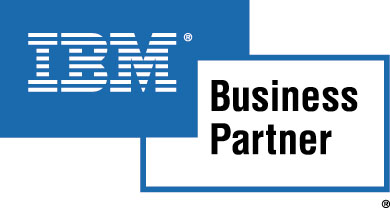 |
|||||||||
|
|||||||||
tcACCESS
tcACCESS - SQL Technologies
View Technology User-specific SQL queries can be defined with the tcACCESS administration application and stored as a “view”. The end user can execute this view and get the data exactly at the time he needs it. An icon on his desktop might be a link to the tcACCESS view. Simply clicking on this icon would automatically execute the view and make the data available to the user. Using this technique, data from different data sources can be joined and retrieved in the form of a logical table. The end user does not need to know how the data is physically structured, where it resides, how many physical files are involved and what access method to use. He simply works with his “view” when he needs the data in his spreadsheet application. Areas of use With the Open System Transparency component of tcACCESS mainframe data sources AND databases from an OpenSystem platform can be joined and used as a view. Features:
Join Technology Simple combination of different data sources: tcACCESS supports "Joins". Multiple data sources (i.e. VSAM, DL/I and DB2) can be joined in one query. The identical treatment of DB2 resources and non-relational data sources offers data access strategies not easily available before. Joins between mainframe-data and Open System-data: tcACCESS supports the combined processing of mainframe data and Open System data using SQL statements. For example: VSAM and ORACLE-data can be joined in real-time and be processed by an EXCEL-spreadsheet, or a mainframe application can process an SQL statement that selects data from an IMS- and an ORACLE database. SQL to non-relational data sources: Using the Structured Query Language (SQL) to access non-relational data sources makes it easy for a programmer or end user to access mainframe data. Areas of use He or She doesn't need to be a mainframe specialist. This allows easy access to legacy file structures from any workstation application (i.e. Back Office solutions, Database Management Systems, Decision Support Systems). tcACCESS supports the "View Concept" which guarantees that only the data the end-user is authorized to work with will be available. The data can come from different sources but will be presented like a relational table. Features:
Mainframe Access to Open Systems Databases Open System Transparency – Access to Open System Resources from Mainframe Applications tcACCESS allows a direct access to any ODBC data-source or ORACLE database that is available on MS-Windows- or UNIX/LINUX-server. Information stored on Open System server can be processed by Online- (CICS, IMS/DC etc.) and Batch programs (Mainframe Software). The tcACCESS Open System Transparency provides a true real-time integration for mainframe applications, which may even completely eliminate the need for a synchronization of mainframe- and Open System data-sources. In a heterogeneous environment bidirectional data exchange will be extremely simplified. Open System Transparency example tcACCESS enables a mainframe application to process SQL-Server-data or data of an ORACLE-database. The data can even be joined with mainframe data (i.e. DB2, VSAM, IMS/DB, ADABAS, etc.). The JOIN is performed by simple SQL-statements. The mainframe program calls an API of the tcACCESS SQL-Engine. The program passes the SQL-statement that must be executed and connection parameter for the ODBC driver. The SQL-statement can already define a join between mainframe and Open System data. The tcACCESS API passes the application request to the tcACCESS Listener that is running on a MS-Windows- or UNIX/LINUX-workstation. The Listener extracts the data using the corresponding ODBC-driver and returns the data to the tcACCESS SQL-Engine on the mainframe. If required, the SQL-Engine will then join the data with any other mainframe file as specified in the SQL-statement. The processing can be bidirectional. Transaction processing is supported. Features tcACCESS Open System Transparency for the mainframe can easily be implemented and provides an excellent performance when accessing the Open System data. No special requirements must be available for the network topology. The special highlight is the support of Joins of mainframe data and Open System data. Features:
© 2022 aMod. All Rigths Reserved. |